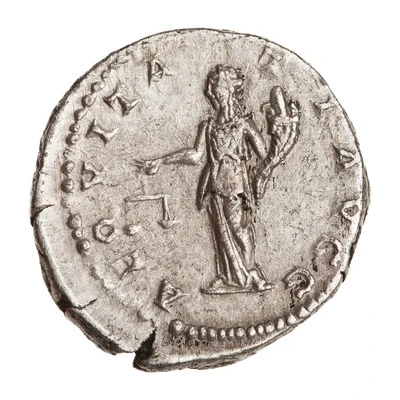Denarius - Septimius Severus AEQVITATI AVGG; Aequitas
| Silver | 3.2 g | - |
| Issuer | Rome › Roman Empire (27 BC - 395 AD) |
|---|---|
| Emperor | Septimius Severus (Lucius Septimius Severus) (193-211) |
| Type | Standard circulation coin |
| Years | 197-200 |
| Value | 1 Denarius |
| Currency | Denarius, Reform of Augustus (27 BC – AD 215) |
| Composition | Silver |
| Weight | 3.2 g |
| Shape | Round (irregular) |
| Technique | Hammered |
| Demonetized | Yes |
| Updated | 2024-10-05 |
| Numista | N#269197 |
|---|---|
| Rarity index | 97% |
Reverse
Aequitas, draped, standing left, holding scales in right hand and cornucopiae in left hand.
Script: Latin
Lettering: AEQVITATI AVGG
Translation:
Aequitati Duorum Augustorum.
Equity of the two emperors.
Comment
Source:Online Coins of the Roman Empire (OCRE)
Interesting fact
The Denarius - Septimius Severus coin was minted during the reign of Emperor Septimius Severus, who ruled the Roman Empire from 193 to 211 AD. This coin was part of a series of coins minted to promote the emperor's image and propaganda, and it features the emperor's portrait on one side and the goddess Aequitas on the other. Aequitas, who represents equality and justice, was an important symbol of the Roman Empire's values and was often depicted on coins during this period. The coin's design and message were meant to convey the emperor's commitment to fairness, justice, and equality for all citizens, which was an important aspect of his rule. The coin's silver content and weight were also carefully regulated to ensure consistency and accuracy in trade and commerce. Overall, the Denarius - Septimius Severus coin is a fascinating piece of history that provides insight into the political and economic practices of the Roman Empire during this time period.

